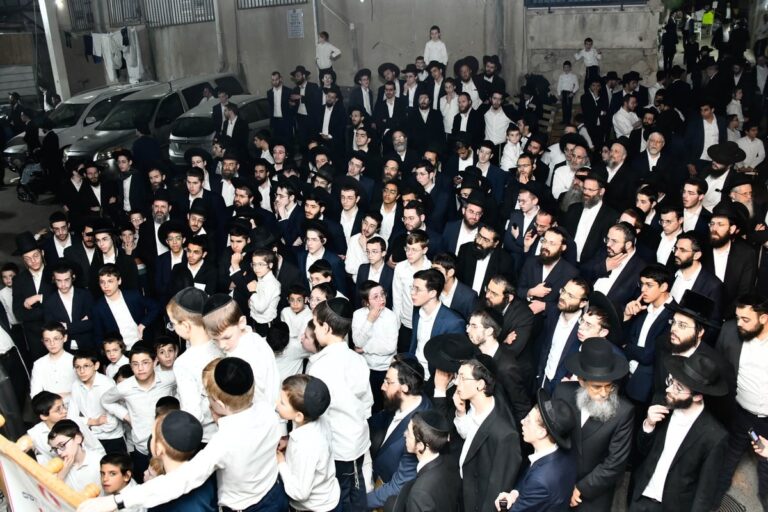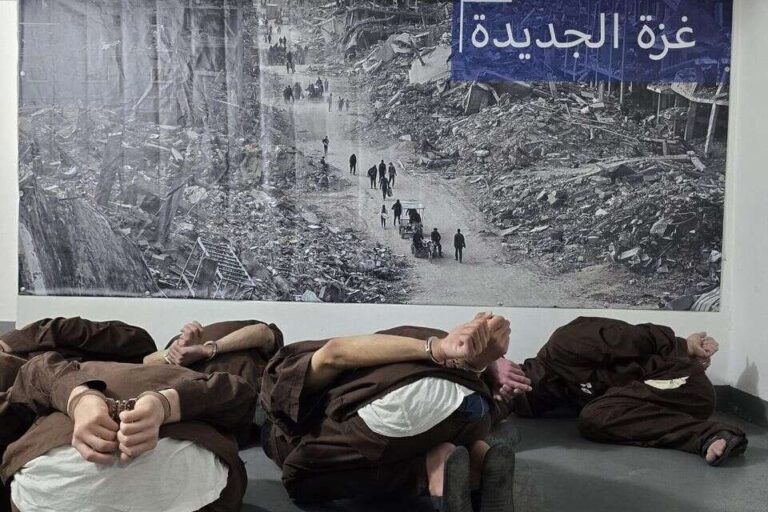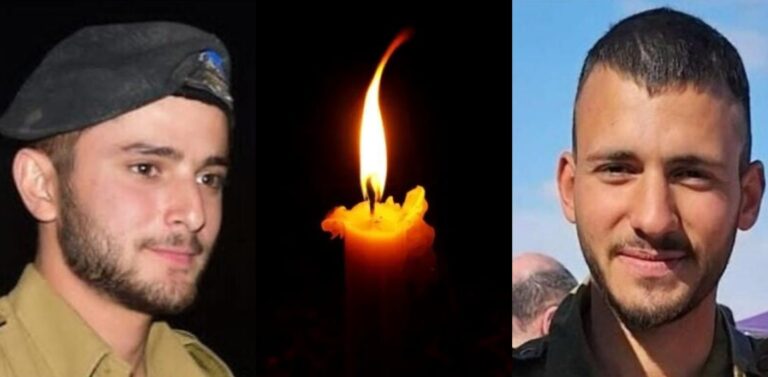 [PHOTO & VIDEO LINKS POSTED BELOW]
[PHOTO & VIDEO LINKS POSTED BELOW]
Today (Tuesday) is the 33rd Yartzheit of the Satmar Rebbe ZATZAL – the Divrei Yoel. Tens of thousands will be making their way to the Kever in Kiryas Yoel. Below are parts of an article on the life of the Satmar Rebbe Zechuso Yagen Aleinu.
For rare photos of the Satmar Rov, click HERE [Courtesy of Shezoli].
The Satmar Rav, a direct descendant of both the famed Yismach Moshe and the Chavas Daas, was recognized as a young man for his unusual lomdus, hasmadah and tzidkus – Torah scholarship, diligence and piety – assuming his first rabbinical position as Rav of Muzheyer at the age of seventeen. By the outbreak of World War 11, he was Rav of the thriving community of Satmar and had emerged as one of the leading figures in Hungarian Jewry. He distinguished himself with his heroic adherence to Torah under the most brutal conditions of the Nazi concentration camps. After a brief stay in Eretz Yisrael, the Rebbe came to America in 1946 and settled in the Williamsburg section of Brooklyn.
Click HERE to watch video from a mobile device.
It was in Williamsburg that the Rebbe painstakingly helped thousands of fellow survivors reconstruct their lives, at the same time reconstructing a thriving Chassidic community – taking advantage of all technological advances of contemporary America, while shunning its values and the more apparent aspects of its life-style. As a result, at the time of his passing, the Rebbe presided over a tight-knit, highly disciplined community numbering in the thousands, with major settlements in Williamsburg and elsewhere, including their flourishing Kiryas Yoel in New York’s Monroe Township, Monsey, Montreal, and of course, Jerusalem, where he was Rav of the Eida Hachreidis.
The Rebbe was renowned for his extremely strong stand against Zionism, even refusing to accept the existence of the State of Israel – differing markedly with Torah authorities of Agudath Israel in this. For that matter, he opposed the very concept of an organized coalition-structured Orthodoxy as personified by Agudath Israel. Nonetheless, he was respected – even revered – in other circles for his vast scholarship, tzidkus, personal humility, astute wisdom, and unwavering tenacity.
The 100,000 people that crowded the streets of Monroe to bid farewell to the Satmar Rav included followers and admirers, Chassidim and Misnagdim, Europeans and Americans, paying homage to one of the greatest of contemporary Jewish leaders, who had taught and led his people as a Rav for seventy-five years … He will be missed – not only by those who followed his particular ideology, but by Orthodox Jews of contrasting viewpoint as well who saw in him a tower of principled leadership.
Of the hushed tens of thousands that came to pay their last respects to the Satmar Rav at his funeral, a large number were members of other communities – various Chassidic groups, yeshiva circles, and out-and-out Misnagdim. They came out of deference to a giant of vast scholarship, who had symbolized a rare level of personal devotion to G-d as well as a demanding, inspiring leadership of a type that has largely disappeared from the world scene. As Rabbi Yitzchok Hutner (Rosh Yeshiva of Mesivta Rabbi Chaim Berlin – Gur Arye) had said regarding the Satmar Rav on an earlier occasion:
Noach suffered a maimed leg as punishment for the one time that he was late with the lion’s meal in the Ark. It would seem that Noach should have been forgiven this one tardiness. But a lion is king of the beasts, and is worthy of service in a manner that is in keeping with its royal position, without any exceptions – especially this particular lion, which was the last of its kind … The same, said the Rosh Yeshiva, may be said of the Satmar Rav. “I’m here to honor him because he’s the last of the lions.”
A great many of those present at his funeral were paying tribute to “the last lion’’ – the last leader of his kind in our midst.
From the time of his Bar Mitzvah until the outbreak of World War I1 – a period of forty years – Reb Yoel never slept on a bed, except for Shabbosos – studying Torah, on his feet, by day and by night … In the internment camp in Bergen-Belsen, not only did he eat nothing that might have been un-kosher, subsisting mostly on potatoes, but he fasted as often as four times a week.
He continued this procedure until his last days; and even when he did eat, his first meal usually was a cup of coffee at 3 or 4 in the afternoon … “Do I want to eat now? A Jew doesn’t eat because he wants to. He eats because he must.”
It seemed as though he never had to prepare for a lecture, drashah, or shiur. In Europe the custom had been for someone to open a Midrash Rabba at Shalosh Seudos, and read three passages at random – giving the Rebbe material for his dissertation. He would then expound at length, quoting passages from the Midrash verbatim … In America, he would enter the yeshiva’s bais hamidrash, ask where the bachurim were up to in their studies, open the Gemara and begin a long, involved lecture without further notice.
An alumnus of a Lithuanian-type yeshiva in Israel sat near the Rebbe at his Pesach Seder. The Rebbe was amused at his guest’s pompous measuring of the precise portion of food and drinks required for the rituals (even though the Rebbe himself was no less fastidious). As the guest prepared his matzos, the Rebbe asked him, “Are you sure it’s the right shiyur (required amount)?’’ Similarly, after he ate the marror, and later when he eyed his afikomen before consuming it, the Rebbe smilingly asked, “Is it the shiyur?”
Finally, the fellow put down his matzah and said, “Rebbe I’m not sure. But isn’t it the shiyur of tcheppen (teasing)?”
The Rebbe was deeply disturbed that he had actually offended the man with remarks that he had only meant as a friendly exchange. He begged his forgiveness again and again, as was his habit when he felt he had mistreated someone. Finally he asked him, “Please see me right after Yom Tov.”
When the man reported to the Rebbe, he asked, “Why are you here? Why did you come to America?” “I’m here because I must raise five to six thousand dollars to marry off my daughter.” “I’ll get the money for you. And please – any children that you will be marrying off in the future – come here and I’ll take care of your financial needs.” The Satmar Rav was not satisfied until he had financed the weddings of the man’s four daughters.
When Rabbi Yaakov Kamenetzky spoke at the unveiling of the matzeivah (monument) at the gravesite of the Satmar Rav, one week after his passing, he commented on the special gift G-d had bequeathed on our generation through the presence of the Satmar Rav for over nine decades:
“When an era closes, there is always a danger that the succeeding generations will be oblivious to the values and special character of their predecessors. Thus G-d often grants one exemplary member of the preceding era longevity, to permit him to teach the next generation how the old generation lived – by his mere presence. Thus did Rabbi Yehudah Hanassi – who closed the era of the Tannaim by writing the Mishnah – continue to ‘frequent his home’ for decades after his passing; and Rabbi Yochanan, who compiled the Jerusalem Talmud, lived for hundreds of years…; and thus did the Satmar Rav grace our generation with a greatness in scholarship and piety that had been identified with the glory of days gone by.’’
(This article originally appeared in the Jewish Observer)










